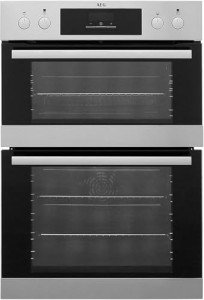10 No-Fuss Ways To Figuring Out Your Integrated Electric Oven
The Rise of Integrated Electric Ovens: A Comprehensive Guide
Integrated electric ovens are ending up being significantly popular in contemporary kitchens due to their streamlined style, energy performance, and advanced cooking features. Developed to blend flawlessly with kitchen cabinets, these appliances not just improve aesthetics but also offer a series of functionalities that cater to the culinary needs of contemporary households. This post will look into the benefits of integrated electric ovens, how they compare to conventional ovens, and crucial factors to think about when purchasing one.
What is an Integrated Electric Oven?
An integrated electric oven is created to be built into kitchen cabinetry, offering a structured appearance that makes the most of space efficiency. Unlike freestanding ovens, integrated designs typically feature a flush fit with cabinetry and come with styles that can match or match the surrounding kitchen decor. These ovens normally feature a wide variety of functionalities, including convection cooking, self-cleaning alternatives, and wise innovation functions.
Benefits of Integrated Electric Ovens
The appeal of integrated electric ovens lies in their various advantages. Below are a few of the key benefits:
Aesthetic Appeal
- Integrated ovens use a tidy and contemporary look.
- They can be personalized to match the kitchen's kitchen cabinetry and design style.
Area Efficiency
- Developed to optimize the offered kitchen area.
- Suitable for smaller kitchen areas where freestanding designs may be troublesome.
Advanced Cooking Features
- Lots of models include features such as convection heat, steam cooking, and several cooking modes.
- Smart ovens can even link to Wi-Fi for remote monitoring and control.
Energy Efficiency
- Electric ovens typically supply more consistent heating and faster cooking times compared to gas ovens.
- More recent designs are developed with energy-saving innovations, which can help in reducing energy expenses.
Improved Safety
- Integrated ovens typically include features such as car shut-off and child lock functions for included safety.
Table 1: Comparison of Integrated Electric Ovens and Traditional Ovens
Function
Integrated Electric Oven
Conventional Oven
Style
Built-in, flush-fitting
Freestanding, uses up more space
Cooking Efficiency
Normally quicker, more even warming
Varies, normally longer warm up
Aesthetic Integration
Smooth with kitchen cabinetry
Standout appliance
Area Usage
Space-saving
Needs more floor area
Advanced Features
Often consists of wise technologies
Restricted technological combination
Energy Efficiency
Usually more energy-efficient
Can differ by model
Secret Features to Look For in Integrated Electric Ovens
When looking for an integrated electric oven, various functions must be taken into account to guarantee you select a model that fits your cooking style and choices. Here are some crucial functions to think about:
Size and Capacity
- Search for ovens that fit within your kitchen cabinets and examine internal capability based upon your cooking requires.
Cooking Modes
- Think about designs that provide multiple cooking functions consisting of bake, broil, steam, and convection to expand culinary possibilities.
Self-Cleaning Options
- Self-cleaning modes conserve effort and time in keeping the oven.
Control Options
- Touchscreen controls or smart tech integration for remote gain access to can add convenience to cooking.
Energy Rating
- Select energy-efficient models with good rankings to make sure lower operating expenses.
Warranty and Support
- Look for service warranties to cover repair work and replacements and the schedule of client service.
FAQs
Q1: What makes integrated electric ovens different from built-in ovens?
A1: Integrated electric ovens are specifically created to mix into cabinets, offering a seamless visual, while built-in ovens may not always have the exact same flush style and frequently stick out more as specific appliances.
Q2: Are integrated electric ovens more costly than conventional ovens?
A2: Generally, integrated electric ovens can be more expensive due to their design and advanced functions. However, the long-lasting energy cost savings and improved performance frequently offset the initial expense.
Q3: How do I guarantee correct installation of an integrated electric oven?
A3: It is recommended to hire a professional for setup, as integrated ovens need exact measurements and can include electrical connections that need to adhere to local building regulations.
Q4: Can I tailor the look of my integrated electric oven?
A4: Yes, numerous makers use adjustable panels or finishes to match your kitchen cabinetry, permitting a fully integrated appearance.
Q5: What maintenance does an integrated electric oven normally need?
A5: Regular cleaning, specifically after heavy use, and inspecting seals and vents for wear are recommended to keep the oven's performance and look.
In conclusion, integrated electric ovens are a useful and trendy addition to modern cooking areas. ovensandhobs include aesthetic appeal, energy effectiveness, and advanced cooking features, making them a popular choice for home cooks. Understanding the essential attributes and comparing various models can assist customers make informed acquiring decisions and pick an integrated oven that best fits their cooking requirements and kitchen design. With their smooth integration and technological advancements, these ovens are poised to end up being staples in the kitchen for many years to come.
